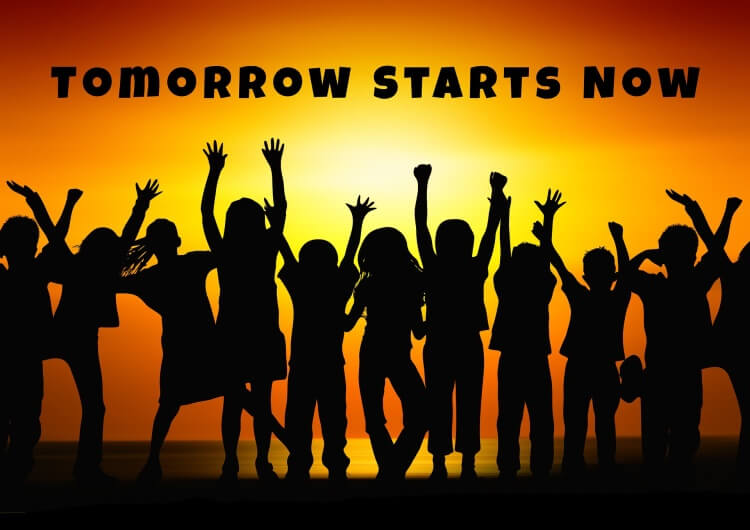Fall is a time for creating a sense of community with your students so that the rest of the school year goes along smoothly. Programs for “Social Emotional Learning” (SEL) and “Character Education” focus on creating positive environments so that no matter what unit you teach your students will benefit in ways beyond the basic acquisition of physical skills. As physical educators, we are ideally positioned to foster a climate for learning via SEL and good character building.

Collaborative for Academic, Social & Emotional Learning (CASEL) is one organization that “works to advance the science and evidence-based practice of social and emotional learning.” Their scientifically rigorous studies of adolescents between ages 5 – 18 show that SEL programs:
- Are effective in both school and after-school settings and for students with and without behavioral and emotional problems.
- Are effective for racially and ethnically diverse students from urban, rural, and suburban settings across the K-12 grade range.
- Improve students’ social-emotional skills, attitudes about self and others, connection to school, and positive social behavior. They also reduce conduct problems and emotional distress.
- Improve students’ achievement test scores by 11 percentile points.
For more information, go to www.casel.org.
The following are also some excellent publications available specifically for physical educators for team building and character education:
- Adventures in Peacemaking (W. Kreidler & L.Furlong, Project Adventure)
- Adventure Curriculum for Physical Education: Elementary & Secondary (J. Panicucci & N. Stratton-Constable, Project Adventure)
- QuickSilver (K. Rohnke & S. Butler, Project Adventure)
- Silver Bullets (K. Rohnke, Project Adventure)
- Character Education (D. Glover & L.A. Anderson, Human Kinetics)
- Team Building Through Physical Challenges (D. Glover & D. Midura, Human Kinetics)
- More Team Building Challenges (D. Midura & D. Glover, Human Kinetics)
- The New Games Book (The New Games Foundation)
- More New Games (The New Games Foundation)
- Best New Games (D. LeFevre)
I use a combination of these invaluable resources and have found terrific success in creating a sense of community within my classes. Here’s an example of how I do it with my 3rd – 5th grade students.
After a couple of weeks of rules, procedures, listening games, and other basic managerial-type activities, I start with a game I created called “Peacemakers” (adapted from the activity “The Peaceable Being” from Adventures in Peacemaking). In preparation I made 25 blue cards with the same script on each card (see below) and another 25 cards with different scenarios (this is enough for a double class and I have several!). All of the cards are laminated.
The Blue Card scripts read:
1. Tell the person what you didn’t like.
2. Tell them how it made you feel.
3. Give the person a chance to talk to find out why he/she did what he/she did to you.
4. How can you make peace?
5. Shake hands (or fist bump) and smile or simply agree to disagree and walk away w/o further incident.
The other cards are yellow and have different actions on them. They could be physical or verbal. Samples include:
1. Say, “Your team stinks!”
2. Say, “Loser!”
3. Gently bump into your partner as you pretend to walk past him/her.
4. Stick out your tongue at your partner.
Cones are scattered around the gym and one blue card and one random yellow card are placed next to each cone. Using music, the students are asked to do various locomotor skills throughout the gym space. When the music stops, the students pair up at a cone. When each student has a partner, each student picks up a card (either the blue card or the yellow card) and the person with the yellow card begins to act out the scene. The person with the blue card reacts with the given script mentioned above.
I stress in the beginning that there is a lot of acting in this game and many students love that. I keep one set of blanks (one yellow and one blue) at one cone and that’s the “bullying” cone where I go and do a pretend bullying scene. There’s a lot of laughter and many students feel really silly doing this with me but the conversations at the closure of class make it all worthwhile. Students often share with me their own real life experiences and as time allows, we talk about these experiences with the whole group.
Throughout the school year I reinforce the blue script as the real life scenes inevitably play out within the class. The conflict resolution results are pretty amazing no matter what unit we are working on. If a student is having a problem with another student I say, “Remember the game Peacemakers that we played in the beginning of the year?” I then send them to a poster displayed on the gym wall and they follow the script once more. They know what to do since we “played” the game and in this way my class keeps running smoothly and the conflict is usually resolved fairly quickly. Occasionally I have to act as mediator if the two students cannot resolve their differences, but for the most part the conflict resolution skills learned previously are used effectively.
Following this activity, I spend about two to three weeks (4 – 6 classes as I only see my students twice a week for 40 min. per session) on basic group challenge activities and vary the games depending on the grade level and maturity. The Adventure Curriculum for Physical Education is a great guide for starters. As you get comfortable with the material, the scope and sequence of what you can do is endless. And if the weather permits, there are many activities that can be done outside.
In closing, in addition to the books mentioned above, I highly recommend any Project Adventure course. They are invaluable and well worth the time, effort and expense. Go to www.pa.org for more information.

